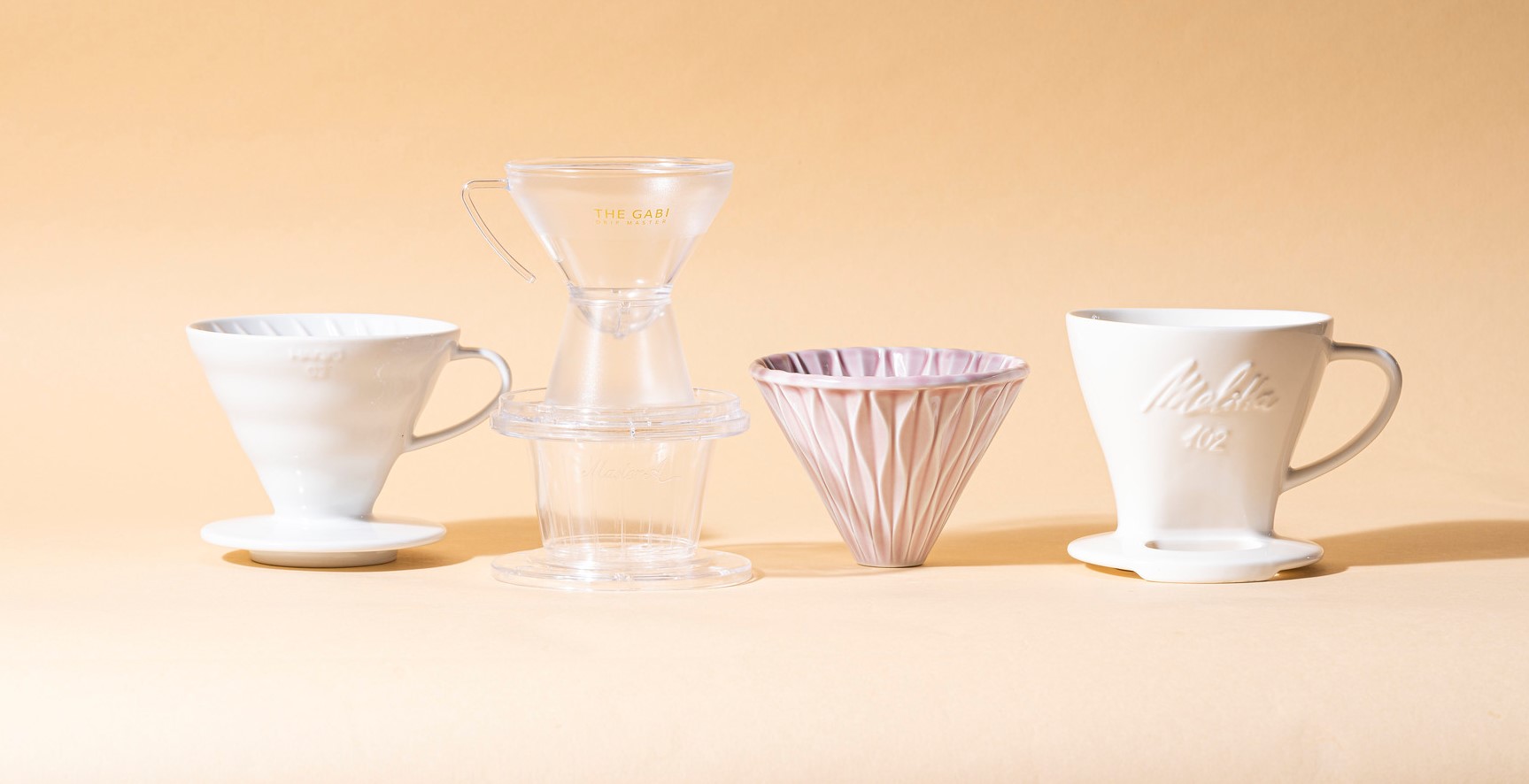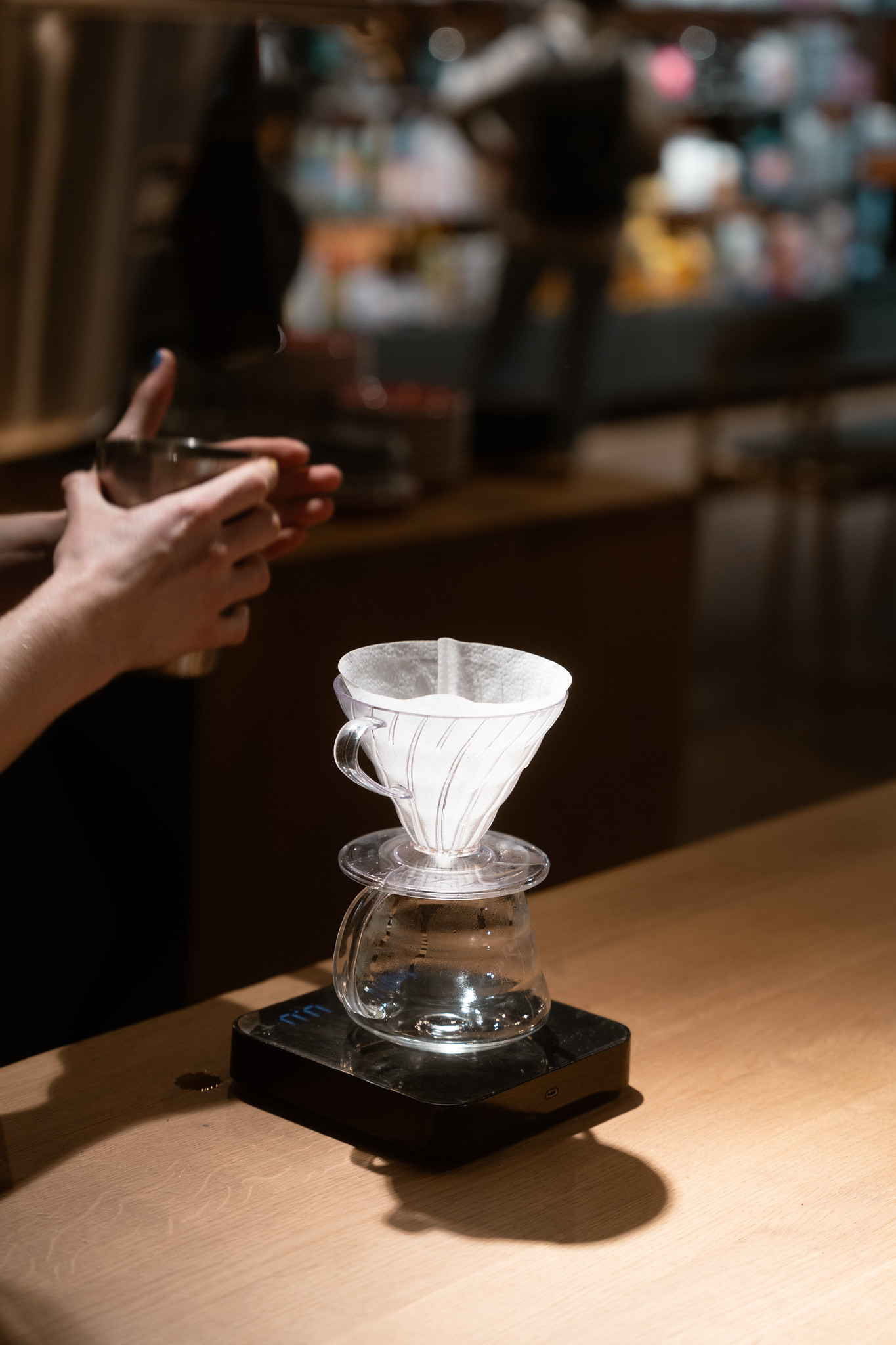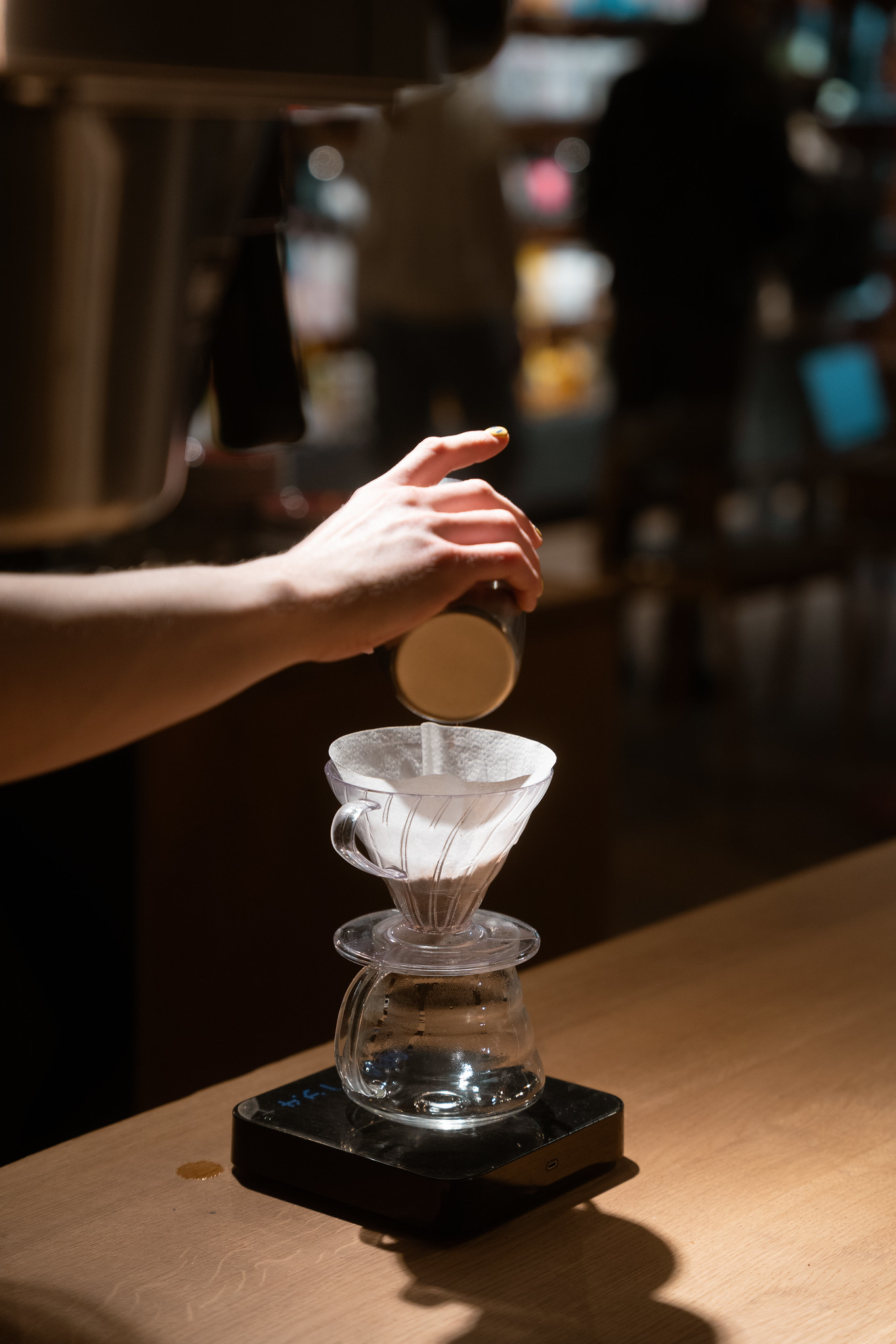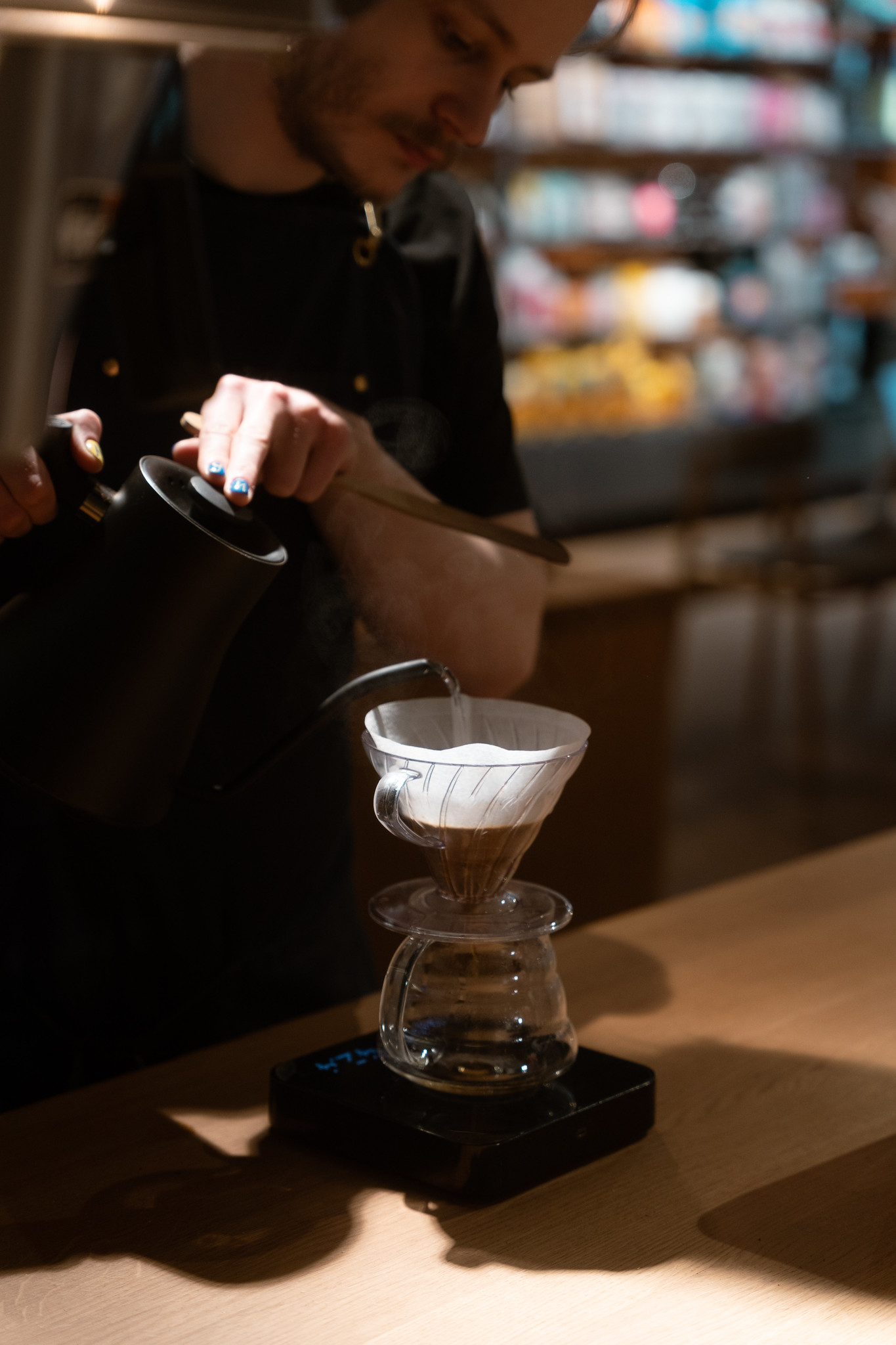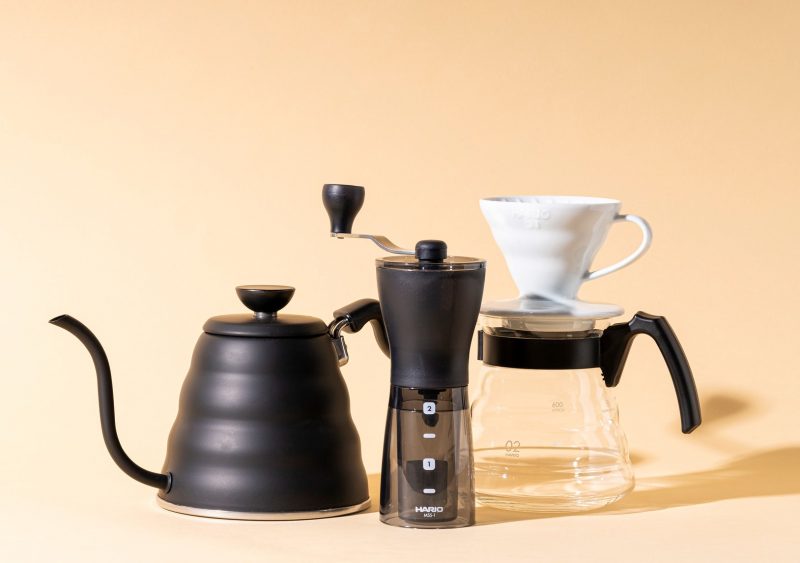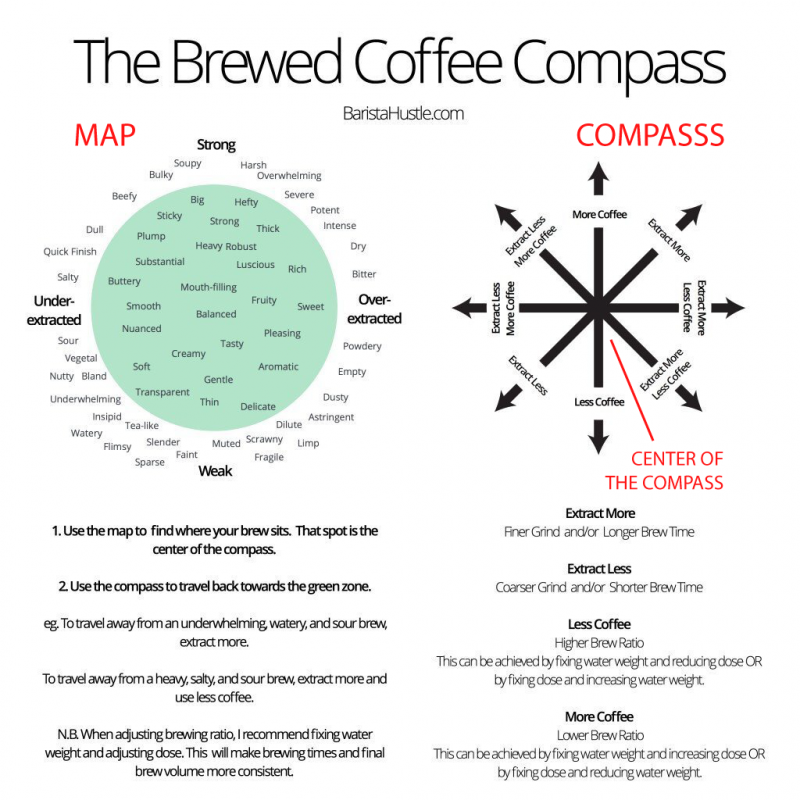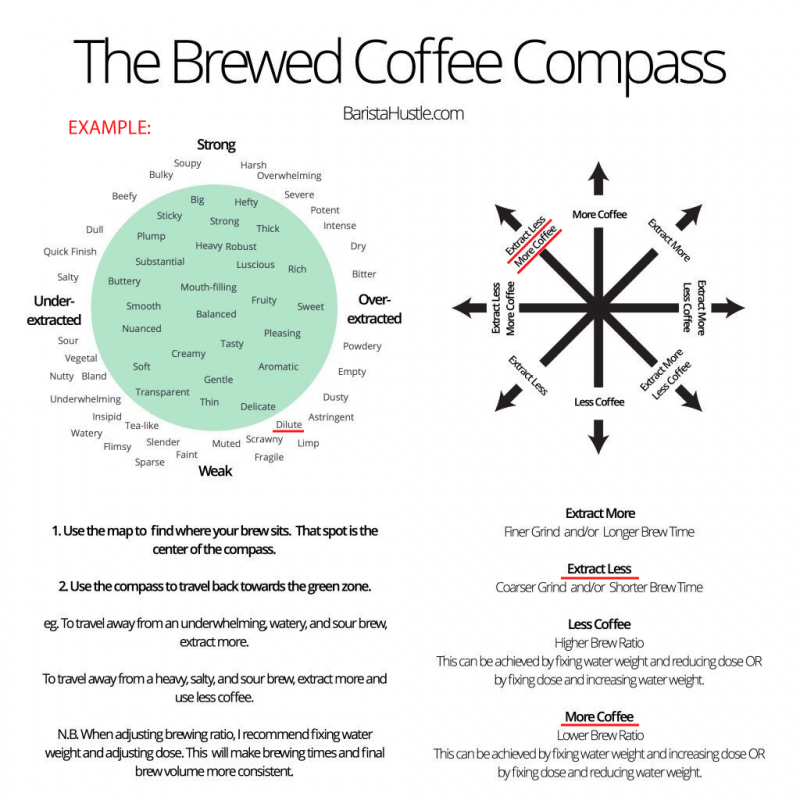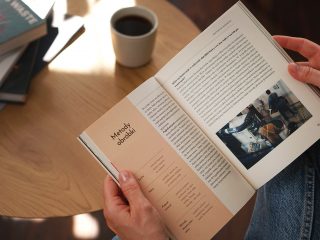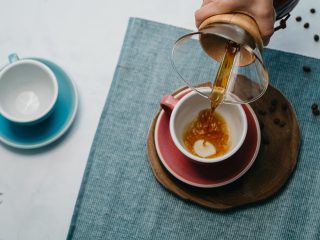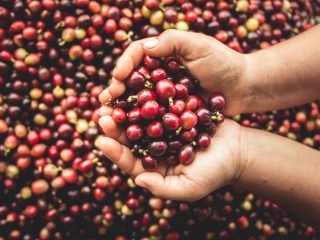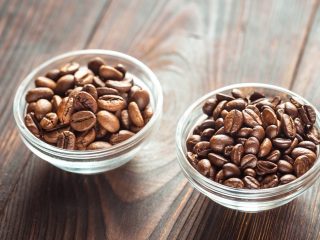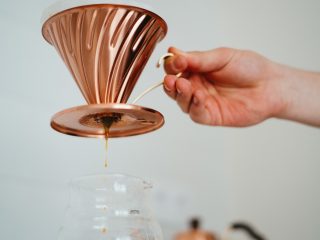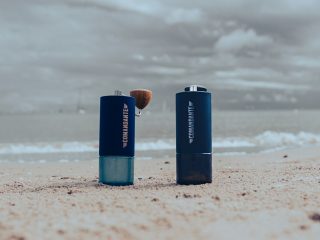If your drip or any other pour-over coffee is always a 10/10, cast the first stone. That’s what I thought. After all, every barista not once has wondered what went wrong. These situations happen both at home and in cafés. At the end of the day, you need a separate recipe and an individual approach to each coffee.
Coffee works with us more or less, that’s just the way it is, but there are many tried and testes rules that let you correct the brewing mistakes and the unpleasant taste sensations that spring from them. Before we strip that away, let’s focus on the factors that affect the quality of the brewed coffee.
Factors influencing the taste of coffee:
- The solubility of the grain – the darker the roast, the more fragile the grain and the faster its dissolution. Alternative brewing uses light or medium roast.
- Grinding – the finer the grind, the slower the brewing. My starting point for pour-over coffee (c. 300 ml) is coarser grind which resembles brown sugar.
- Dosage – different amounts of coffee will differently affect the extraction time and the efficiency of the entire process. The more coffee you use, the longer the brewing takes. The golden ratio is 6g of coffee / 100g of water.
- The quality of water – affects not only the extraction process, but also the quantity and quality of the compounds that infuse the brewed coffee with taste and smell.
- Extraction time – the longer it is, the more intense the brew. Average time for a drip coffee (c. 300 ml) is 2:30–3:00 minutes.
- Water temperature – significantly affects the effectiveness of brewing. The higher the temperature, the faster the compounds dissolve. In case of pour-over coffee, it is worth oscillating between 90–96 degrees.
- Stirring – any turbulence makes dissolving of what’s supposed to dissolve a little faster.
- Filtration methods – the material and type of the filter will influence the taste, and, most of all, the texture of the beverage, e.g. paper filters will give a cleaner and clearer brew than metal ones.
Tough break, though. On the way to the perfect brew, all these factors kind of stand in your way, but once you embrace their importance and the influence they make, it will be easier to draw conclusions.
All right. So you’ve brewed some coffee. You take the first sip, the second, another one… It is important to evaluate the brew at various temperatures. It may turn out that when the coffee is hot, it tastes very good, while the negative aspects like dryness or astringency come up a moment later. And vice versa. Sometimes a warm brew may seem dull, and when it cools, the acidity or the fruity notes come up. We are striving for the coffee to be stable and for the flavours to be of high quality at any temperature.
What to look for in the perfect cup?
- Aroma – simply the smell of the brewed coffee. You check it right after you’ve prepped the beverage. Focus on intensity and quality. It’s great when the brew is intense and evokes positive associations (fruit, chocolate, flowers, etc.)
- Flavor – the sum of all taste and aroma sensations (from aroma to taste and aftertaste). Evaluate the intensity, quality and complexity. Ideally, flavors should be clear, i.e. easy to describe, positive (fresh, dried and candied fruit, honey, caramel, etc.) and multi-dimensional (multiple sensory groups in one cup, e.g. flowers and chocolate).
- Aftertaste – the impression that lingers at the end of the throat and palate after drinking coffee. Evaluate the length, intensity and quality. If the aftertaste negatively affects the general impression (it is tart, excessively bitter, has unpleasant aromas), it should be rated lower. If it carries pleasant aromas and sensations and positively influences the overall coffee experience, it should be rated higher.
- Acidity – when it is positive, it is refreshing and pleasant, it usually supports the natural sweetness and adds lightness. It shouldn’t get tart.
- Body – is a physical sensation on the tongue and palate associated with the texture of the brew. It’s about viscosity, thickness and weight on the tongue. It’s not good when the coffee is watery or tarry. It’s pleasant when the body is tea-like or creamy.
- Balance – evaluated at the end, taking into account all the previous aspects and how they are interconnected. Balance in the cup is the goal of every barista 🙂
A compass that will show the way
So, how do you deal with coffee that is bitter, astringent, too heavy or too watery? Try the compass! (source: baristahustle.com)
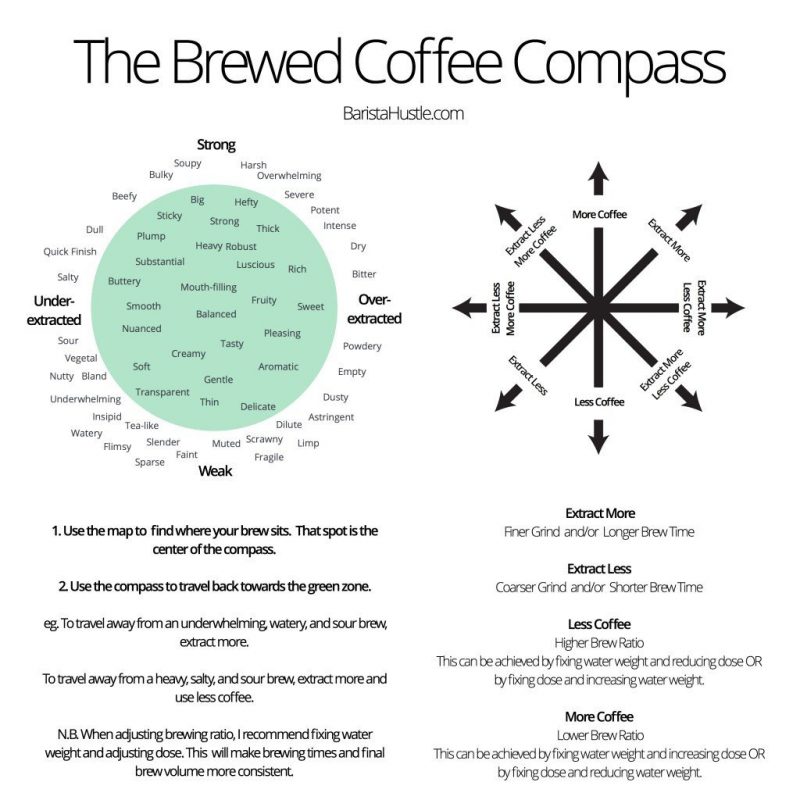
How to use it?
- Find the word that best describes your brew on the map on the left. This term is the center of your compass.
- When the term is undesirable for coffee it means that the center of the compass has landed outside the green circle. Your task is to follow the arrow that leads to the center of the green circle. This arrow will lead you to the clue (e.g. less coffee, or extract more).
Example:
- Your coffee is watery and feels diluted.
- Set the center of the compass on the word ‘dilute’.
- Find the arrow leading to the center of the green circle, which is the term ‘balanced’.
- Note that this arrow give two clues:
– extract less – you can do two things: grind coarser and / or shorten the brewing time and if that doesn’t help, use clue number two:
– more coffee (higher dose) – add more coffee to the recipe (one or two grams) or use less water than before.
Remember to change only one parameter at a time, otherwise it will be difficult to judge which change influenced what. If your coffee still has some negative qualities – follow the above tip for other descriptive words.
Coffee brewing, and mostly the quest for the perfect recipe, is a process that teaches patience and meticulousness. Although the beginnings can be difficult, each subsequent brewing is easier and more intuitive. It turns out that as experience increases, you need less time and fewer trials to correct the flavour, and the satisfaction comes faster. Personally, looking for the perfect balance in coffee is what I love the most. Perfect cup at the end of the process is the perfect reward which make the effort worthwhile!

